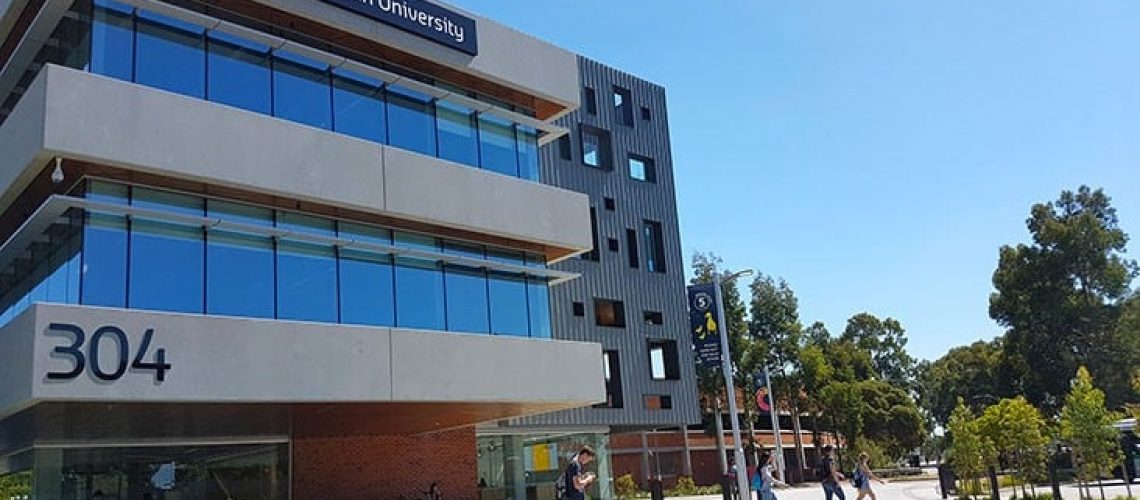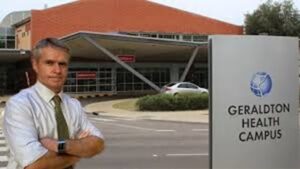Back in 1936 when The University of Western Australia established the independent faculty of Agriculture there was only one university to support the states 25,000 farm businesses. Eighty-four years later and there are now around 5,000 farm businesses, and the State has five universities with four (UWA, Curtin, ECU and Murdoch), offering competing undergraduate agricultural science and business courses.
While the two oldest sectors of the WA economy, minerals and agriculture, are likely to pull through the economic impact of COVID-19 relatively unscathed, the State’s third biggest export earner, education, is rapidly sinking under a sea of inefficiency and financial pain as its over-exposure to overseas students hits the bottom line.
What’s surprising is how little media attention this has received. What we have unfolding at our universities is a Virgin Airline size collapse in every State, as each of Australia’s 43 universities accounts crashes into a sea of red.
Our universities once there to teach those who graduated from Australian schools to become our future agricultural scientists, geologists, teachers, doctors and dentists have become addicted to the high fees paid by the growing numbers of foreign students.
Because our public universities are QUANGOs (Quasi Autonomous Non-Government Organisations) they have been living in the twilight zone between the public and private sectors effectively having the luxury of two sets of parents.
As COVID bit, they desperately turned for help from government. As so often happens when one has a sugar daddy or mummy, they seemed to believe that the real world of budget reality did not apply to them and they can live forever in a life of comfort, free from the harsh realities of making ends meet. There is every reason for them to grow up.
Unlike Virgin Airlines which found that when the passengers stopped coming, the administrators were quickly rolled in, the Universities have been quietly pleading with government to make good the shortfall in their books. A shortfall in Western Australia that could be well into the hundreds of millions of dollars by this time next year, as each of our four publicly owned billion-dollar businesses struggles to find replacement students or dollars.
The facts are, there are too many administrators at too many universities administering a business model that is too reliant on too many overseas students. Their solution to the current cash crisis is to wait expectantly for State and Federal governments to dole out cash to keep their campuses going until the foreign students return.
But will they? The global world of old school education has failed to deal with the pressure of the digital revolution with its online learning and virtual classrooms becoming the new normal. We now have global education brands like Harvard and Oxford actively competing with local bricks and mortar universities for students. But our universities are still in the horse and cart days busily focused on seeking funds to build ivory towers on empty campuses during the good times and crying poor when the money runs out in the tough times.
All the universities have so far received as a response to their pleas for emergency funding was a guarantee to continue with the existing level of government grants for domestic students, at around $18 billion a year. This will not help reduce the $4.6 billion loss in revenue they are having to address over the next six months nor the $12 billion that could be left in China if the Chinese government instructs their students to not study in Australia.
To put this in context our entire Australian grain exports are valued at around $10 billion, and the entire foreign earnings of all Agricultural exports is nearly matched by our education sector of $38 billion vs $44 billion.
Funding from the Commonwealth Grant Scheme for domestic students is now for many universities less, and sometimes much less, than the inflated income from overseas students, most of whom come from China. No wonder the Chinese Ambassador’s recent words caused so much alarm to Vice Chancellors when he threatened to send their students elsewhere. Australia has effectively subcontracted the funding for its tertiary teaching and research to his country at the expense of our own students.
We are already seeing pressure on university colleges as residents have stayed at home to continue their studies online or have simply returned overseas never to be seen again.
At the University of Western Australia’s residential colleges, mainly built to house country students the funds have just about run out.
Many of these colleges are loaded with debt as they embarked on a massive building spree off the back of loans from the Rudd and State governments, originally devised to help low income families buy houses, until they were hijacked by clever university and college administrators to build luxury student accommodation.
.
Those colleges well run like St Georges and/or with Church connections will have some degree of support but others will be looking to the University across the road to bail them out. But the Universities themselves have few if any reserves available to them. Those with big endowment funds like UWA will find the money is not there for a rainy day, as they are often restricted by their terms of grant or gift.
The only way forward for the universities is to come grovelling to the state and federal governments seeking cash injections and loans. But the governments themselves have their own debt and deficit problems and are unlikely to take a sympathetic approach to businesses whose financial models are reckless and whose administrative expenditure is bloated and has been unaccountable for a long time.
What’s needed is a complete overhaul of our universities. Since the Dawkins failed experiment of turning Institutes of Technology into Universities back in the 1980s it has been obvious, we have far too many universities for such a small population.
Western Australia with just 2.6 million people probably needs no more than two universities. For those who cry about the need for competition, the Western Australian uni’s are today competing with online courses from international universities and interstate offerings – there is plenty of competition out there.
For those with long memories of state university politics, the situation Western Australia’s universities find themselves in is not new, several times over the past forty years the Universities have struggled financially, leading to attempts to bang Vice Chancellors’ heads together and drive some amalgamations. First UWA and Murdoch then Curtin and Murdoch, then Curtin, ECU and Murdoch but no one wanted to share their ivory tower nor were governments willing to force the issue or put sugar on the table.
But now the choices are stark in this world of limited and accountable resources. Do governments want research and teaching or not? If they do, which seems eminently desirable, and particularly important for the agricultural sector, they need to work out how the university sector can afford it.
The Western Australian farming sector has seen the amount of research undertaken into agriculture shrink as the number of students and universities has risen. Brilliant research work done by a handful of academics like Dr John Gladstones, the father of much of the State’s lupin and wine industry has fallen to the wayside as we added first Murdoch, then Curtin then ECU to the list of universities offering agricultural courses. Now we have had to subcontract much of our research to the chemical companies or the eastern states universities because we have lost our critical mass of academics in ag.
There is a simple solution. With just 740 students studying undergraduate agriculture spread across four universities the opportunity exists to reallocate resources away from administration to teaching and research which will benefit students, scientists and farmers.
To do this we need to eliminate ridiculous duplication, triplication, quadrification and quintification of expenses. With five universities there are five payroll functions, five human resource functions, five high cost advertising budgets – international and domestic, five legal departments, five accounting operations – and the list goes on. All with their cushy conditions and 17% super contributions. Where should the money be spent – research, teaching or administration? The answer is obvious.
There is also the matter of replicating physical assets – buildings, equipment, facilities and teaching areas, creating appalling and very costly overlap. Scientific facilities cost tens of millions of dollars and here we have five indulging in an arms race funded largely by taxpayers and overseas students.
Why do we need four facilities across four universities teaching agriculture or medicine? Or five facilities across five universities teaching, teaching? Each with their own administration, heads of department, and fiefdoms.
It can be done, the Federal Government under Morrison cut 18 departments to 4. The McGowan government cut 41 down to 22. The Departments of Agriculture, Regional Development and Fisheries became DPIRD, three collapsed into one, one Director General, one head of IR, one head of HR. The same can be done for our universities.
South Australia is about to go down this path as the University of Adelaide 27,000 students and the University of South Australia 20,000 students are in a financial death spiral and are being forced to reboot previous failed amalgamation negotiations. We already have students electing to go east to the bigger better equipped universities, let’s not have them add South Australia to the list.
In total there are around 129,000 students in all of the four WA public Universities including around 10,000 in overseas campuses – UWA 24,000, Curtin 52,000, ECU 30,000 Murdoch 23,000 – compared to the University of NSW with 62,000 and Monash 84,000. The University of Western Sydney has six campuses spread across Sydney. So, to have larger numbers in various campuses is not something to be afraid of, and the savings in terms of fewer bureaucrats, fewer lunches, fewer advertisements, would be enormous.
If Western Australia really wants a world class education system, and if the farming sector wants world class agricultural science and economics tertiary training and research then the State government should be using the current tertiary education crisis to drive amalgamations and reboot the system to focus more on the education and research of our kids and not employing unnecessary bureaucrats within a financially responsible, sustainable model. The WA universities with their hands out today show that the present model is bankrupt and has to change.











